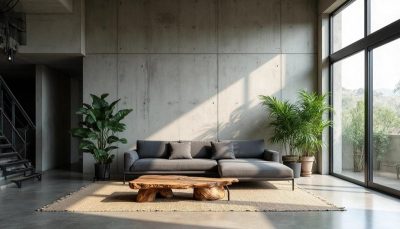
Building your dream house is an ambitious project that combines personal aspirations with practical considerations. It’s a journey that promises the creation of a unique space tailored to individual lifestyles, preferences, and future goals. However, the process is intricate, requiring attention to detail and careful planning across several domains to ensure that the dream translates into a comfortable, sustainable, and beautiful home. Below are ten comprehensive aspects you must consider before breaking ground on your dream home.
1. The Right Team
The success of your home-building project heavily depends on the team you assemble. This includes selecting a builder, architect, and interior designer whose expertise and style match your vision. Some companies handle all of this for you, making it easier to start your build. You can find out more about such companies at that link. Regardless of which direction you go, though, make sure you research potential candidates thoroughly, reviewing their portfolios, checking references, and conducting interviews to ensure they understand your goals and can work within your budget.
2. Choosing the Right Location
The location of your future home influences not just the value of your property but also your day-to-day living experience. When selecting a site, consider more than just the immediate surroundings. Think about accessibility to essential services like healthcare, education, and shopping, as well as proximity to work and social amenities. The physical characteristics of the lot, such as its topography, soil quality, and potential environmental hazards, play a significant role in the design and construction phases. Additionally, it’s vital to research zoning laws and building codes specific to the area, as these can significantly impact your project. A well-chosen location not only meets your current needs but also anticipates future developments, ensuring your home remains a joyful place for decades.
3. Architectural Design and Personal Style
Your home should be a reflection of your personal style, embodying your aesthetic preferences while catering to your functional needs. Collaborating with an architect who aligns with your vision is crucial. This professional can translate your ideas into a feasible design that respects building regulations and sustainability standards. Consider how different design elements, from room layouts to window placements, will affect your daily life. The architecture should also be adaptable, accommodating potential life changes without requiring significant alterations. Furthermore, integrating smart home technology can enhance functionality and efficiency, creating a living space that is not only beautiful but also intelligently designed to simplify routines and conserve energy.
4. Long-term Planning
Your dream home should be designed with the future in mind. Life circumstances can change, and your home should have the flexibility to adapt. Whether it’s the possibility of an expanding family, changing mobility needs as you age, or shifts in how you use your space, considering these factors during the design phase can save costly renovations down the line. Designing multi-functional spaces that can evolve in purpose, considering accessibility for future mobility needs, and planning for easy modifications can ensure your home remains perfectly suited to your life at every stage.
5. Sustainability and Energy Efficiency
Building with sustainability in mind not only benefits the environment but also results in a home that is more economical to maintain in the long run. This involves selecting eco-friendly materials that are durable and have minimal environmental impact, investing in renewable energy sources like solar panels, and utilizing energy-efficient appliances. The design should prioritize natural lighting and ventilation to reduce electricity usage, while high-quality insulation helps maintain comfortable indoor temperatures year-round. Implementing these features can significantly reduce your carbon footprint and lead to substantial savings on utility bills, making your dream home not only more comfortable but also cost-effective.
6. Budgeting and Financing
Establishing a realistic and comprehensive budget is the cornerstone of a successful home-building project. This budget should encompass all conceivable expenses, including the cost of the land, construction materials, labor, permits, professional fees for architects and contractors, and interior design. Additionally, unforeseen expenses are a common occurrence in construction projects; thus, incorporating a contingency fund of about 10-20% of the total budget can safeguard against unexpected costs. Financing the project requires equal attention. Exploring different financing options early in the process, from savings to construction loans or mortgages, is crucial. A clear financial roadmap ensures that your project progresses smoothly and remains within financial bounds, avoiding the pitfalls of overextension or compromising on quality due to budget constraints.
7. Legal and Regulatory Compliance
Navigating the legal landscape is a critical aspect of home building. This includes understanding and adhering to local building codes, obtaining the necessary permits, and ensuring that all construction activities comply with zoning regulations. These legal requirements can vary significantly depending on your location and can influence many aspects of your project, from structural designs to the types of materials used. Engaging with professionals who are familiar with these regulations can streamline the process, ensuring your project proceeds without legal hurdles and that your home is safe, secure, and compliant.
8. Customization vs. Resale Value
While personalizing your home is one of the most exciting aspects of the building process, it’s important to consider how certain choices might affect the property’s future resale value. Highly specific or unusual customizations may not appeal to a broad market, potentially making the home harder to sell should you wish to do so in the future. Striking a balance between creating a space that feels uniquely yours and maintaining broad appeal is key. This doesn’t mean compromising on your vision but rather making strategic choices that allow for personalization while keeping an eye on the general marketability of your home.
9. Quality of Materials and Workmanship
Investing in high-quality materials and craftsmanship pays off in the longevity and durability of your home. Choosing superior building materials and hiring skilled professionals may require a higher initial investment but can save money and hassle in the long run by reducing the need for repairs and replacements. Quality workmanship ensures that every aspect of your home, from the foundation to the finishes, stands the test of time and provides a safe, comfortable environment for you and your family.
10. Lifestyle Integration
Your dream home should be a haven that supports and enhances your lifestyle. This means incorporating elements that reflect how you live, work, and play. Whether it’s designing a kitchen that can host large family gatherings, creating a serene outdoor space for relaxation, or integrating a home office for work, every aspect of your home should be thoughtfully designed to cater to your specific needs and preferences. Taking the time to consider how each space will be used ensures that your home is not just a place to live but a space that enriches your daily life.








